
From dream to reality: How to plan your re-side
This step-by-step guide is your roadmap to the re-side process. Creating your design, choosing materials, hiring a pro—it’s all covered here. Toggle the tabs below to explore each chapter of the re-side process.If you don’t know where to start, you’ve come to the right place
If you approach your re-siding project step by step, the process will be manageable—and the reward will be absolutely beautiful. We’ve outlined the steps of the re-side process below and in our Re-side Guide.
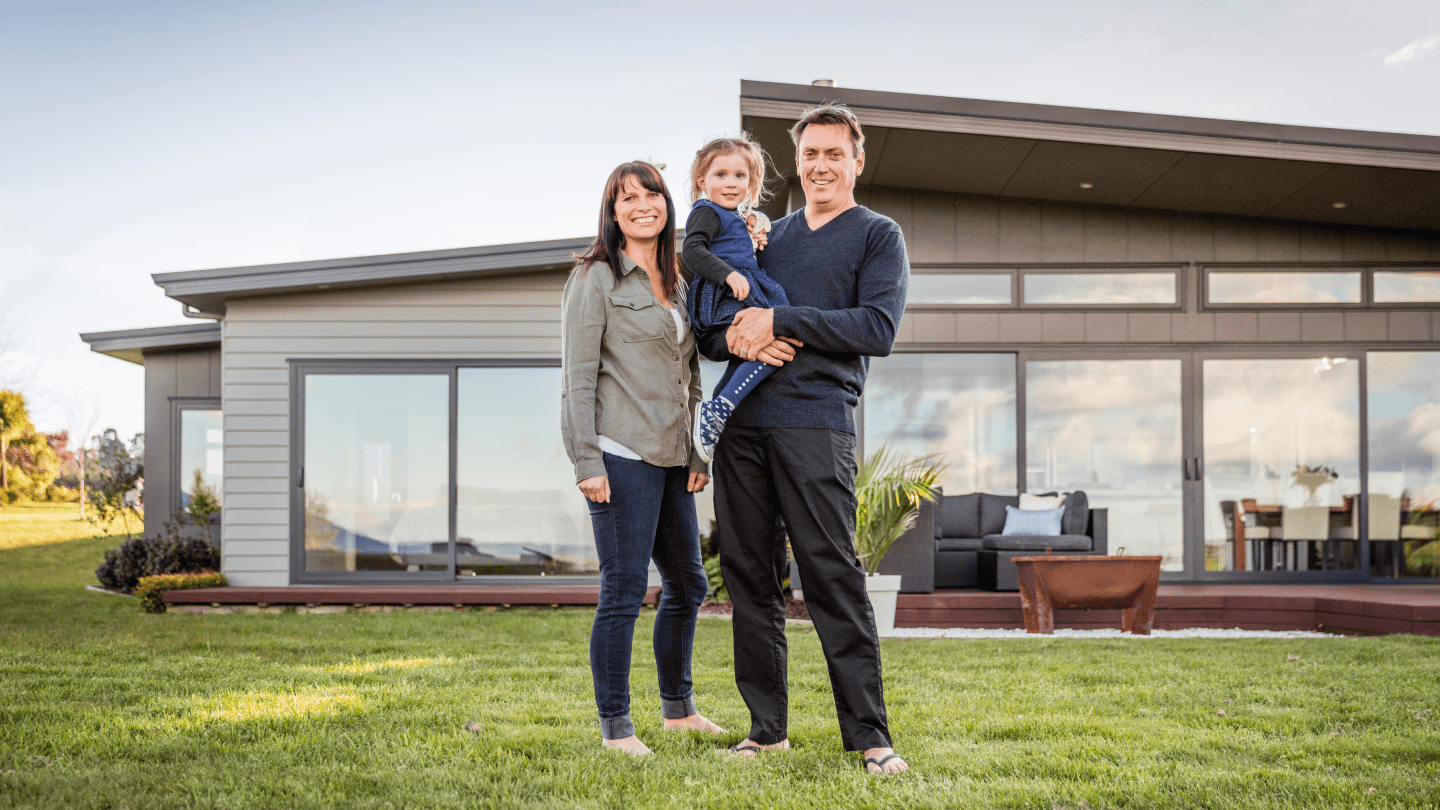
Step 1: How to tell if it’s time
Re-siding your home can be a worthy investment. New siding can express your unique personal style, help offer better protection against the elements, and boost the value of your home. Sometimes it’s clear that a replacement is necessary—like when you’re dealing with damage from weather or pests. But in other cases, replacing your siding may be more of a judgment call.
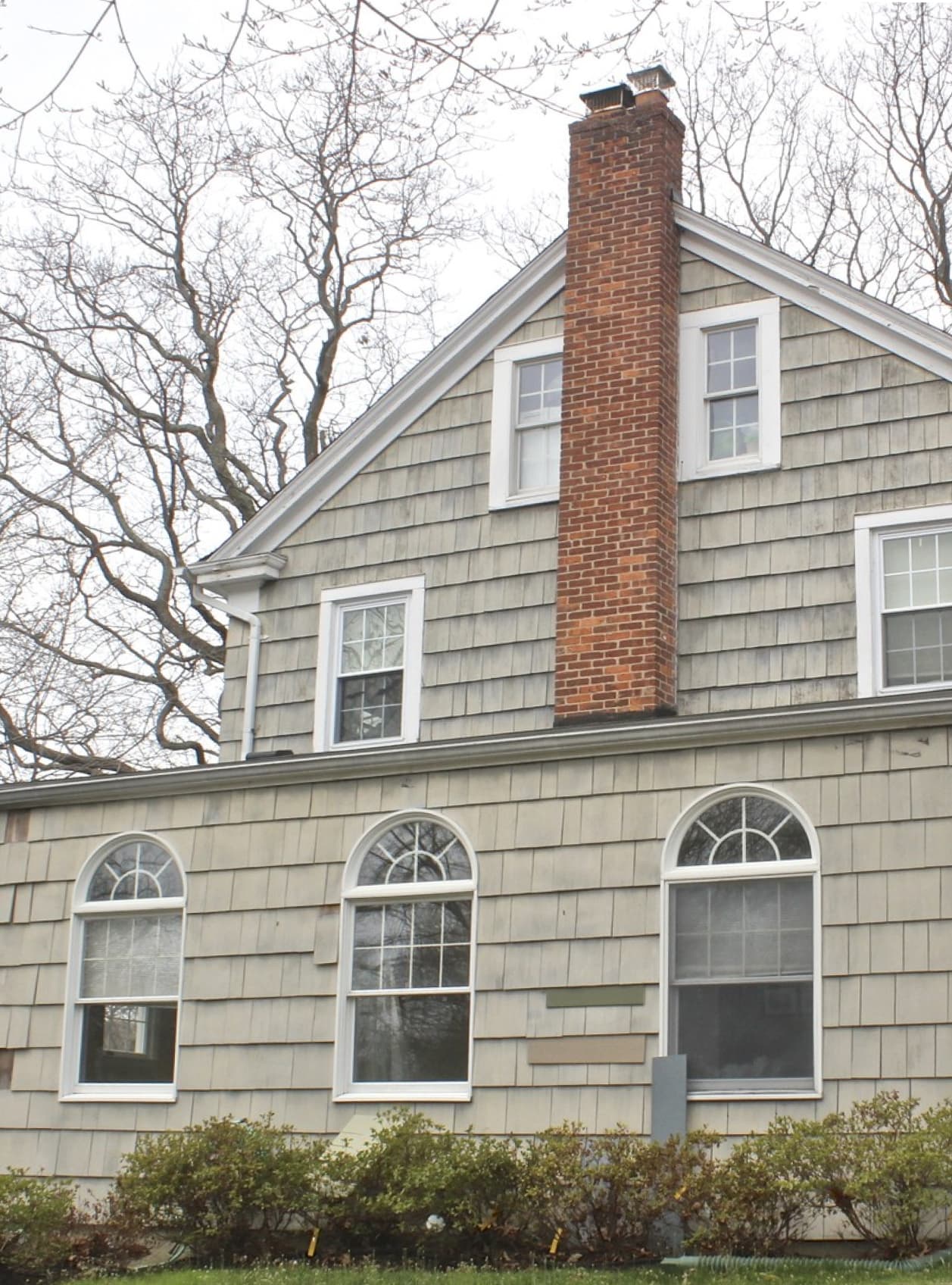

Questions to consider when you’re deciding if it’s time for a siding upgrade
How long has your current siding been in place?
Siding can last for decades, but if it’s near the tail end of its lifespan, it may be time to replace it—especially if your exterior starts to look old or worn, or you’ve outgrown your current style
What kind of upkeep and repair do you need to do?
Some siding may need extensive repair, especially as it nears the end of its usefulness. If pests have made your siding their home, if your siding is chipped or cracked and needs frequent repainting, you may want to consider replacing your siding entirely.
How extensive is any damage to your siding?
Damage can turn a nice-to-have project into an essential project, especially if it’s hard to find replacement siding for specific sections. If you’re dealing with siding damage on a large portion of your house, it may be worthwhile to upgrade your entire exterior.
How long do you plan to stay in the house—and do you plan to sell soon?
Fresh siding improves the value of your home and can entice buyers if you’re thinking about selling. If you’ll be living in your home for a while, you might want to invest in quality siding that will last for decades—and that reflects your personal style.
Is your house the most beautiful on the block?
Matching the energy of your neighborhood can increase the value of your home. If other neighbors have upgraded, that might be an incentive to re-side, especially if there are repairs to make.
How does your siding style and color reflect your personal style?
Your home’s design should be a reflection of your unique personal style. Does your siding feel stuck in the past? You may want to transform the look of your home by replacing dated siding styles and colors. Re-siding your home gives you the freedom to dream—and to achieve—the vision you have for your home.
As we started looking at the house when we were talking to a landscape architect, we thought, well, maybe we should re-side while we’re at it. Now I think it reflects more of what’s on the inside. It looks like a different house— it looks like new.
The Hartleys
Homeowners
Step 2: Compare home siding materials
Siding is your home’s first line of defense against the elements, so choose a long-lasting product that can stand up to weather, fire, and pests—and offers you an eye-catching design that won’t go out of style. Pick something your family will enjoy coming home to, and will appeal to future buyers as well.
Pros and cons of different siding materials
Vinyl
Many people appreciate that vinyl siding comes in a range of colors, at a low cost. However, vinyl siding can melt in a fire and can even be damaged from the reflection of sun off of windows. Vinyl siding is less resistant to temperature extremes than other siding products. Even new vinyl siding won’t replicate the appearance of real wood, and can be more susceptible to fading when compared to other products.
Wood and engineered wood
Wood siding is often considered more aesthetically pleasing than vinyl siding, but its beauty comes at a higher price. Wood siding is also susceptible to moisture and damage from pests like woodpeckers and termites, may require more frequent maintenance over time, and is no match for a fire. Engineered wood siding is plagued by many of the same problems as traditional wood siding. It’s subject to damage from pests, each board is fuel for fire, and it’s susceptible to swelling, warping, and cracking in response to changes in moisture over time.
Fiber cement
Fiber cement is a durable, low-maintenance material made of Portland cement, sand, water, and cellulose fibers. Fiber cement siding is up to five times thicker than vinyl and won’t rot or sustain damage from pests, nor will it ignite when exposed to a direct flame or add fuel to a fire. What’s more, fiber cement siding is more affordable than some of the more expensive siding options. Fiber cement siding, like Hardie® siding, is available in many different colors and styles and can be used to achieve a variety of design aesthetics—from traditional to ultra-modern—or replicate the look of wood or stucco.
Brick and stone
A brick exterior is a lower-maintenance option that is long-lasting and can stand up to the elements. It helps to retain heat, which makes it useful in colder climates. But brick can be expensive, and you won’t have as many color or style options to choose from. Like brick, a stone exterior provides long-lasting beauty, as long as it is installed correctly. Stone is sustainable and recyclable, but it’s costly. Many people choose stone or brick veneer for a similar look at a lower cost.
Metal
Metal siding, like aluminum siding or steel, is strong, durable, and recyclable. Metal siding resists pests and is generally easy to maintain, but dents can be difficult to repair and panels can be tricky to replace. Metal siding is also often more expensive than many other products.
Which material will bring the most value to your home?
When comparing all your options for home siding materials, hardworking Hardie® fiber cement products stand up against fire, water, weather, climate, pests, and time— protecting your most precious asset for the long haul.
- Trusted protection against mother nature—and a 30-year limited warranty on our fiber cement siding, soffit, and trim products
- Long-lasting beauty in a low-maintenance finish: our baked-on ColorPlus® Technology finishes are engineered to last longer and look better than a traditional paint job
- Personalized design to bring your dream aesthetic to life
Step 3: Choose your siding
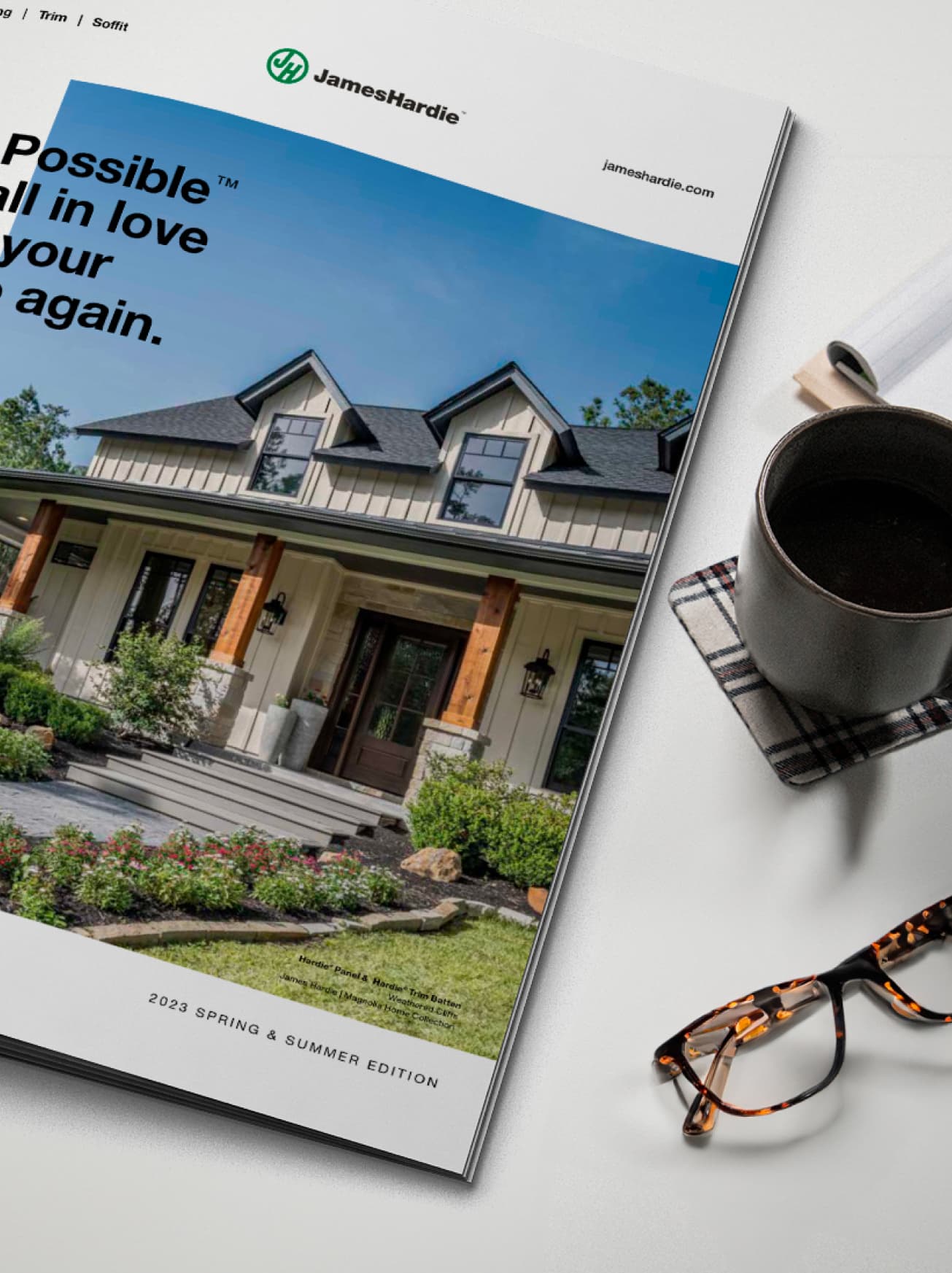
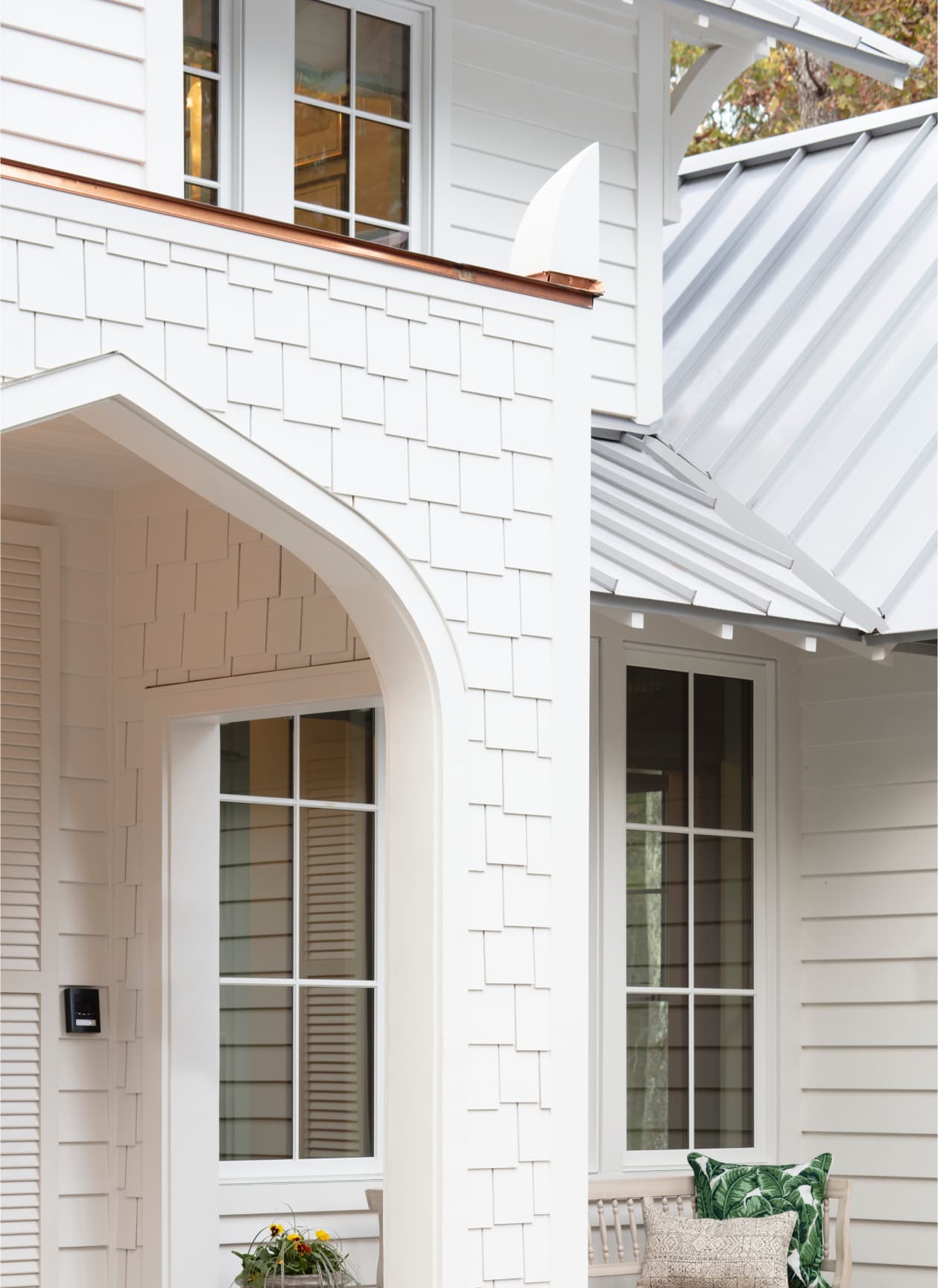
Once you’ve researched your options for materials, it’s time to think about what siding material or brand will work best for your needs, vision, and lifestyle. If you choose Hardie® fiber cement siding, you know you’re investing in a high-performance, low-maintenance material that will look beautiful for years to come. You can explore all of our products, colors, and styles in our product catalog.
Make sure to consider all the factors
Overall budget
While the cost of a siding replacement is one factor, consider the cost of maintenance and repairs over the years as well. Some fiber cement products may even lower your home insurance premium, saving you money year after year.
Design aesthetic
You may decide on a single product that offers a range of styles and colors, or use multiple products to achieve your desired look. For example, some homeowners choose to bring layered texture to their home’s exterior by contrasting Hardie® Plank siding with a Hardie® Shingle accent.
Location
Some siding options are better suited to certain climates than others. Whether it’s extreme heat or freezing temperatures, your climate has an impact on the longevity of your siding. Did you know you can purchase siding that’s engineered for your specific climate? Only Hardie® fiber cement products are Engineered for Climate® to deliver the high performance you need for your area.
Product quality and warranty
Ask for samples so you can see the different materials in person. Review the warranty information for each product so you can see what’s covered and for how long. Unlike other companies, James Hardie provides a 30-year, non-prorated limited warranty for fiber cement siding, soffit, and trim products.
Need guidance from a contractor?
If you want to discuss your re-side with a pro, use our contractor locator to find a trusted professional in your area. They can help you weigh your options and find the ideal material for your home.
*Noncombustible siding is one of several elements that in combination may help protect a home from fire damage caused by external fires. Noncombustible siding alone may not reduce the risk of fire damage. This demonstration is not intended to predict the fire resistance of any specific wall design or siding material installation on your home. Results may vary under different conditions. To learn more about protecting your home from natural hazards, visit ibhs.org, fire.ca.gov/prepare, CalFire, or download the “Designing for Natural Hazards Series” publication from huduser.gov."
Make your home your canvas
This part of the process is all about using your home to express yourself—experimenting with colors, styles, designs, and products until you have a clear vision for your dream home.
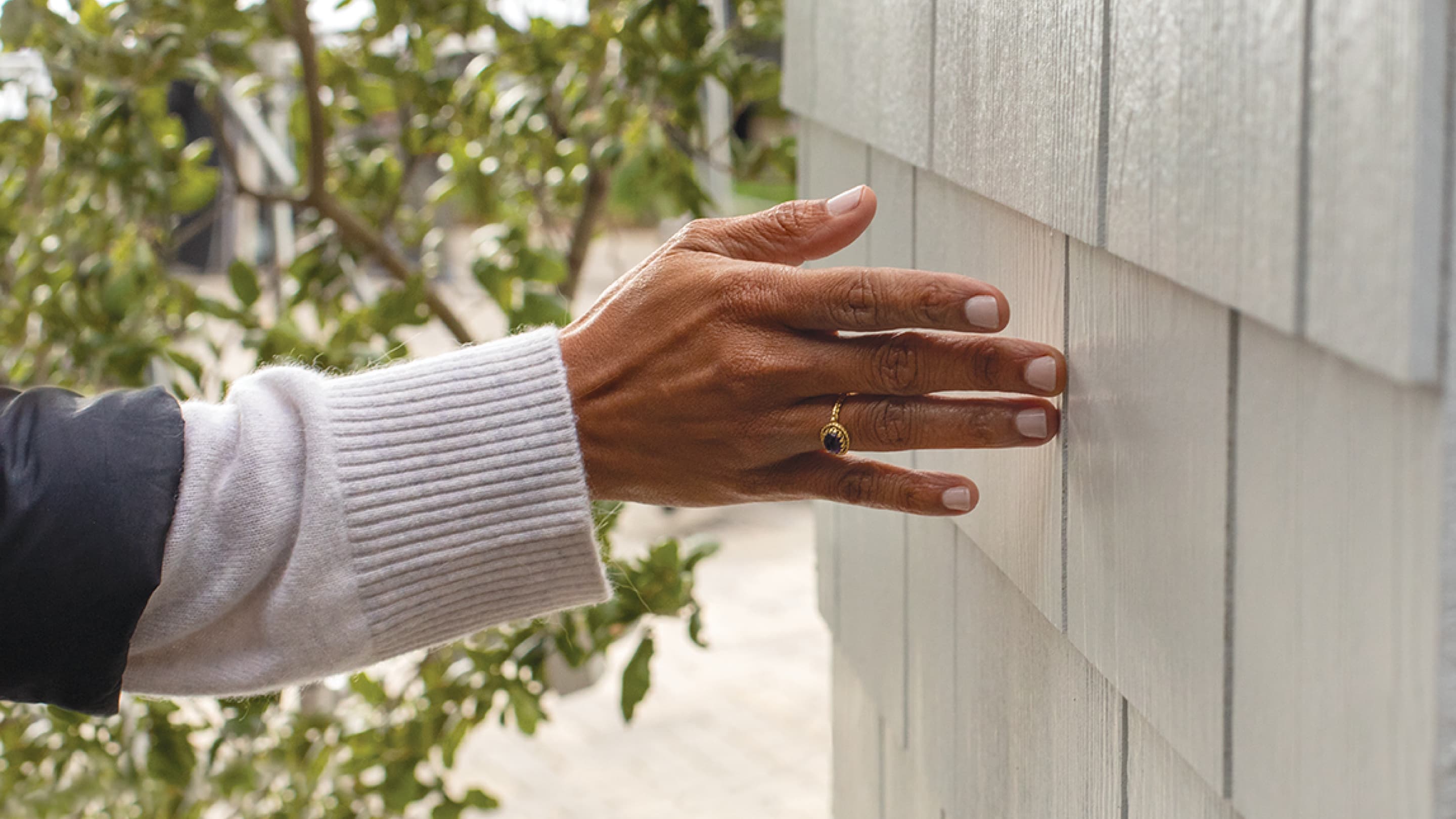
Step 1: Discover your home siding style
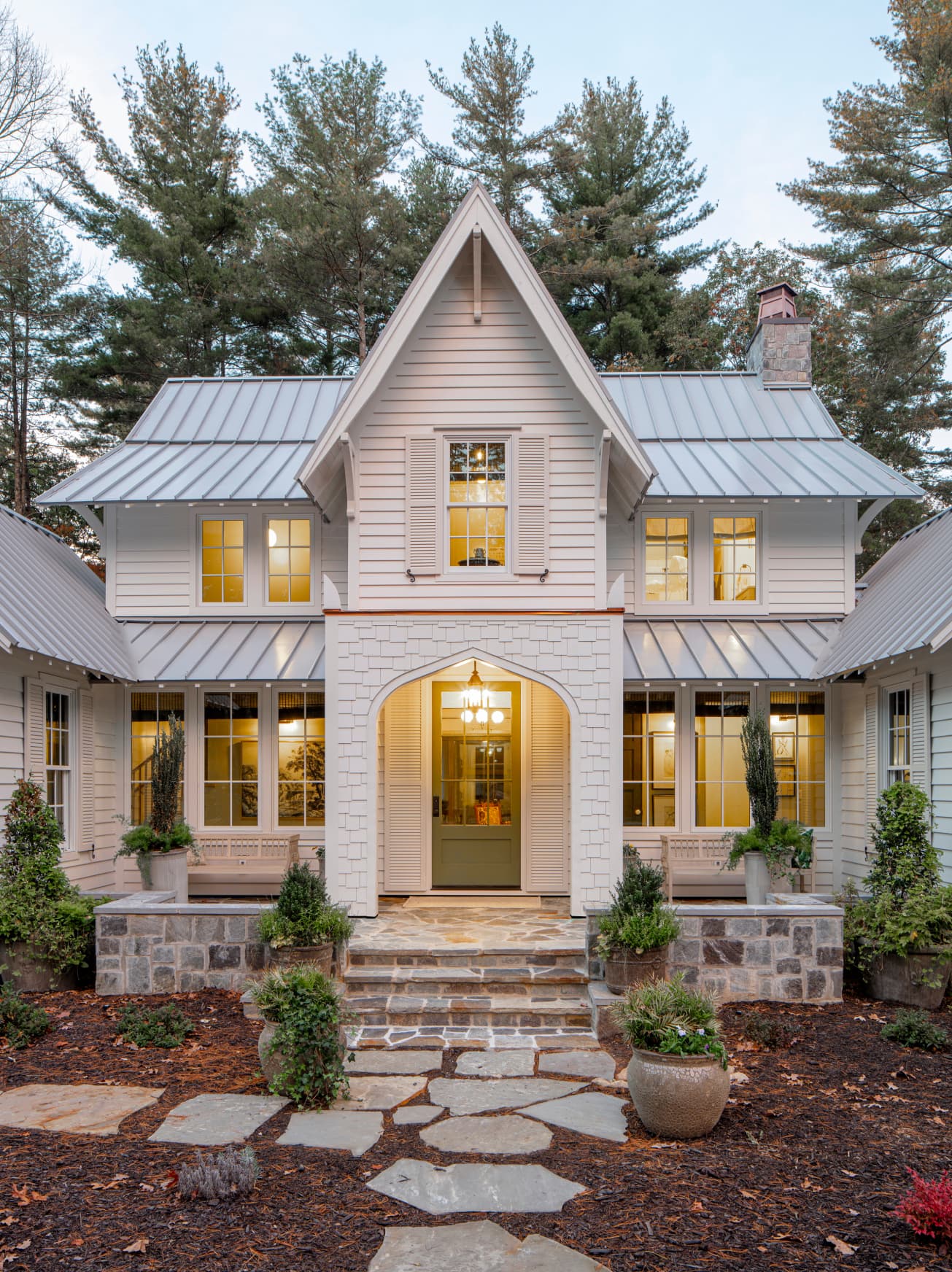

The first step of the design process is to gather ideas that reflect your personality and coordinate with the architectural style of your home. You can use our color and design guide to define your architectural style, explore style options—whether your vibe is classic, elegant, or bold—and browse products that can be used to create your desired look.
Step 2: Bring your design vision to life
We know that choosing between countless color swatches can be hard—and committing to a new exterior color can be even harder. We make it easier to make design decisions: preview colors and design ideas on a model of your actual home with the Hardie™ Designer, powered by Hover®. Using just eight photos of your exterior, Hardie™ Designer creates a 3D model of your home so you can start designing. With Hardie™ Designer, you can see how different materials can completely change your home’s look and instantly swap out colors to find your favorite color palette, helping you to feel confident in your design decisions before your project starts.
Step 3: Order samples
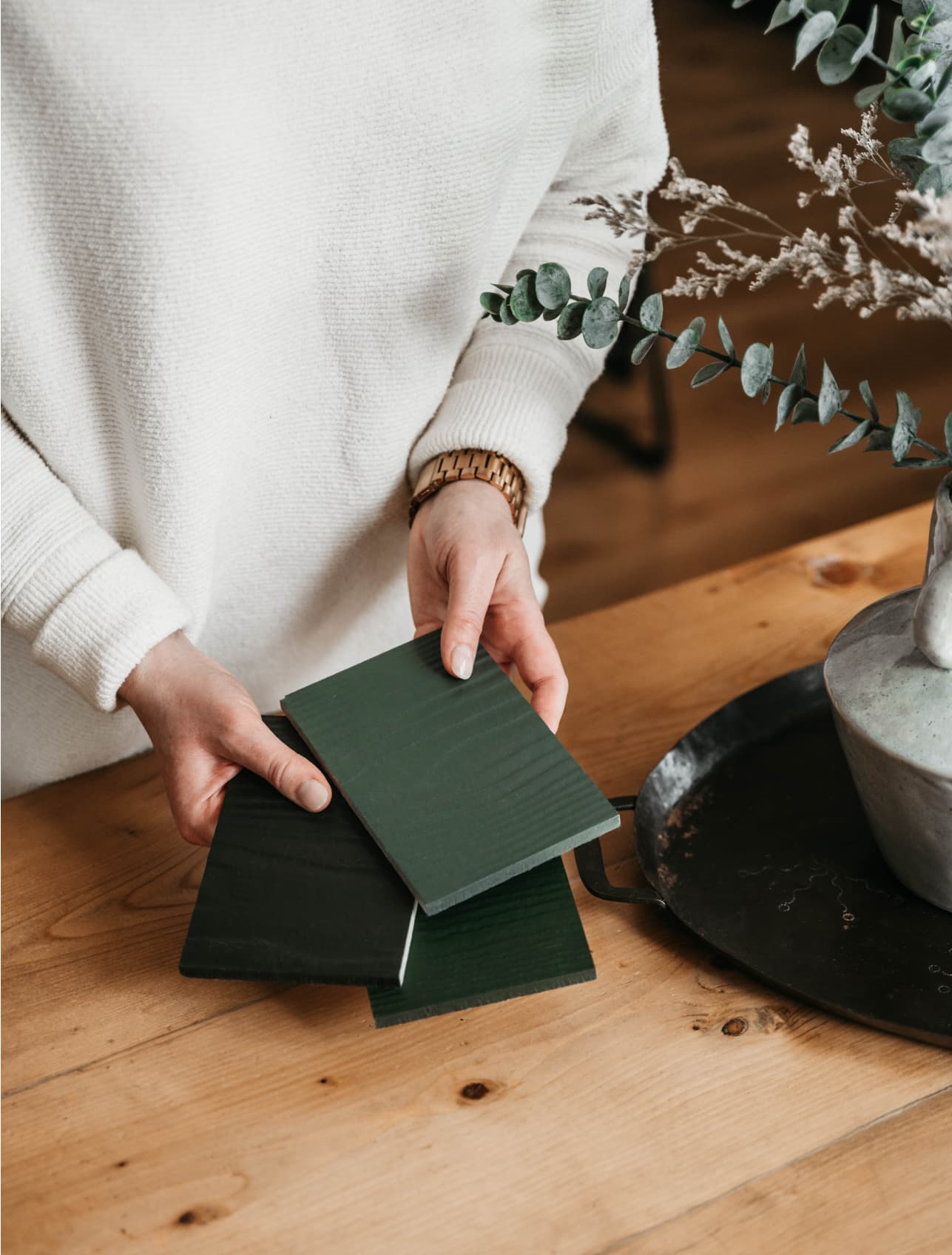

It may be easier to visualize your dream home with samples you can see and feel. Browse our product catalog to find your favorite styles, colors, and finishes—then order samples to experience our colors in real life.
Turn planning into reality
At this stage, you’ll connect with contractors, request and compare quotes, determine financing, and sign your project scope. These might seem like lofty tasks at first, but if you take them one step at a time, the process will become doable—and you’ll be fully prepared for installation day.

Step 1: Choose the right contractor
Choosing the right contractor is about more than getting the best price. You’ll want to make sure the contractor is a good fit for your project.
What a contractor should bring to the table
Open communication
A good contractor will meet with you to learn about your project and understand your vision in detail. Next, they will measure your home to give you an accurate estimate, help you with design choices and color selection, and provide detailed information about product warranties.
Product knowledge
If you choose to re-side your home with Hardie® products, find a contractor familiar with our installation recommendations and requirements for your climate zone. That will ensure that your contractor knows exactly how to work with Hardie® siding and trim to help your home look beautiful and protect it from the elements.
License and insurance
You’ll want to make sure your contractor is licensed and insured. You should also evaluate online reviews and testimonials for details about the contractor’s professionalism and workmanship. And don’t forget to check them out with the local Better Business Bureau for any potential red flags.
Want to skip the background check?
You can meet with top-notch pros through our James Hardie™ ALLIANCE. These contractors are already vetted with third-party customer satisfaction surveys, must be licensed and insured, and agree to follow our best practices for installation.
Step 2: Compare quotes

You may want to meet with several contractors in your area and compare quotes. The initial cost for siding installation can vary by thousands of dollars, depending on what type of siding you choose, the quality of the installer, the size of your home, contractor labor, and even where in the country you live. But there’s more to how much your siding costs than the initial install—like future maintenance, weather durability, and more.
What goes into the cost of new siding
Labor costs
Each quote will contain the cost of specialized labor, as well as any other repairs that need to be made to support your project. This could include repairing wall damage, relocating utilities, or removing and disposing of old materials.
Cost of future siding repairs
Some siding types, like vinyl and metal, can be more prone to damage—whether that’s storm damage, hail damage, or even dents from a rogue baseball or soccer ball. Wood and engineered wood siding is more vulnerable to damage from pests and moisture over time. These future repairs can be expensive, and add to your overall cost.
Cost of siding maintenance
Some siding types may require more maintenance over time. For example, wood siding painted on the jobsite may require routine repainting, depending on paint quality and weather exposure. By contrast, many Hardie® fiber cement products feature ColorPlus® Technology finishes, a baked-on color finish engineered to last longer than paint, saving you money and maintenance year after year.
Other considerations
It’s important to consider how resilient your new siding will be in the face of our changing climate. Will it withstand damage from wildfires, extreme storms, and flooding? Read up on how your new siding is rated for use in wildfire, flood, and hurricane prone areas. Hardie® siding is approved for use in wildfire areas as well as in flood and hurricane zones. Hardie® fiber cement siding, soffit, and trim products come with a 30-year, non-prorated limited warranty—meaning your new siding will be protected for decades to come.
Step 3 : Line up financing
Once you’ve chosen a product and received a quote, you’ll need to map out how you want to finance your siding project. Most homeowners choose to finance a re-side in one of three ways: personal financing, contractor financing, or third-party financing. You can work with a local contractor to find the best option for you, or learn more about financing a re-side on our blog. If you’re financing your siding project through an insurance claim, be sure to check with your contractor to make sure you have all the required documents in order before your project starts.
Step 4: Finalize the scope
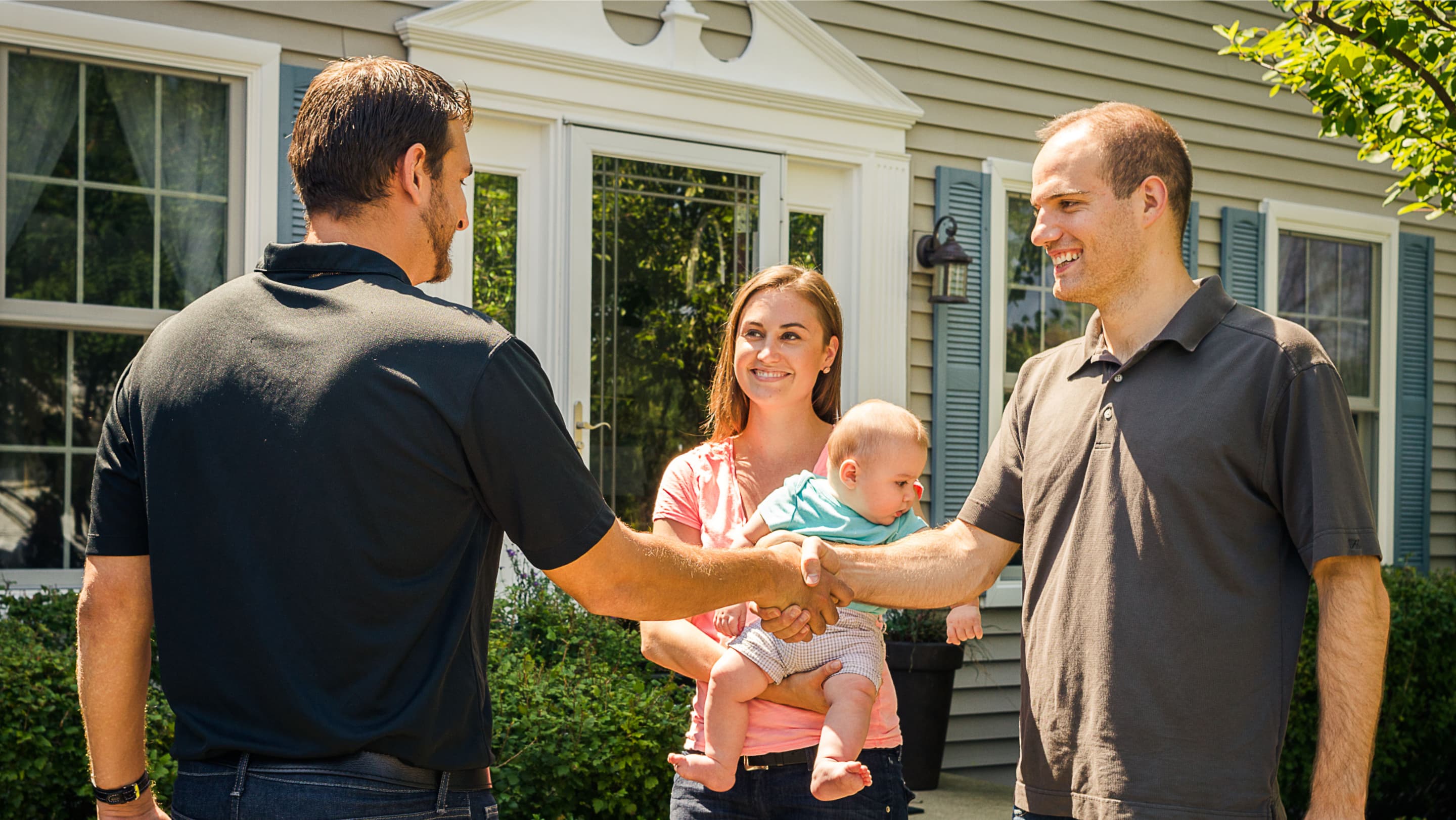
Once you’ve picked a design you’re excited about and selected a trusted contractor, it’s time to get everything in writing. Determine a timeline that works for you and then ask your contractor to put together a detailed schedule and payment structure. Review the contract carefully, requesting input from a trusted and experienced friend, family member, or attorney if needed, and sign off on the project. Congratulations! Your reside is about to begin.
Fall in love with your home again
The end result will be gorgeous, but it’s important to be prepared for the installation process, which can be messy and time-consuming. Your house may not look its best for about four to six weeks, or sometimes longer, depending on the size of your house and the complexity of the project. But when all is said and done, your home will shine.
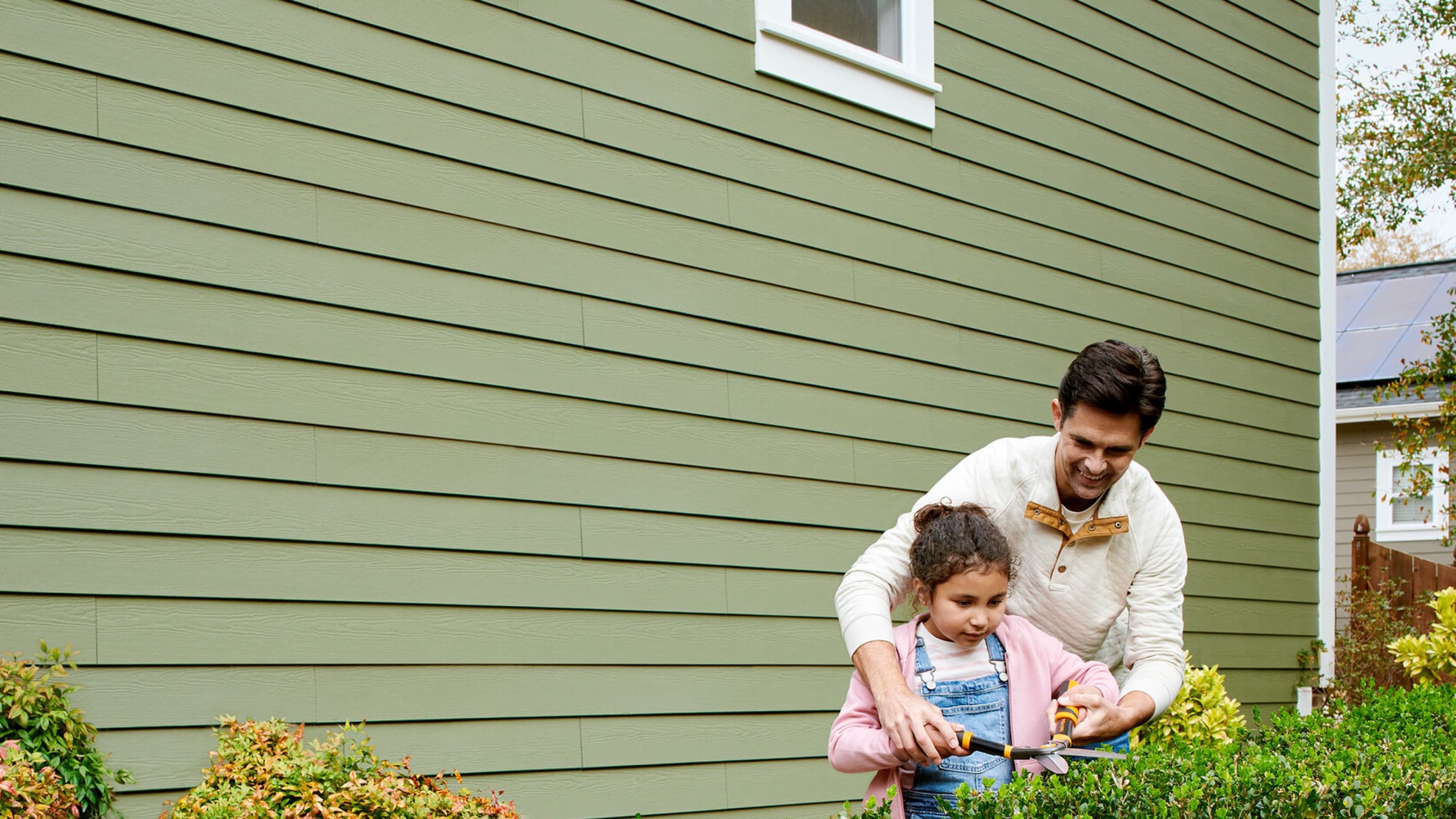
Step 1: Preparation
Your contractor will remove the existing siding and address any problems they uncover, including repairing or replacing sheathing, installing house wrap or moisture barriers, and insulating the home properly.
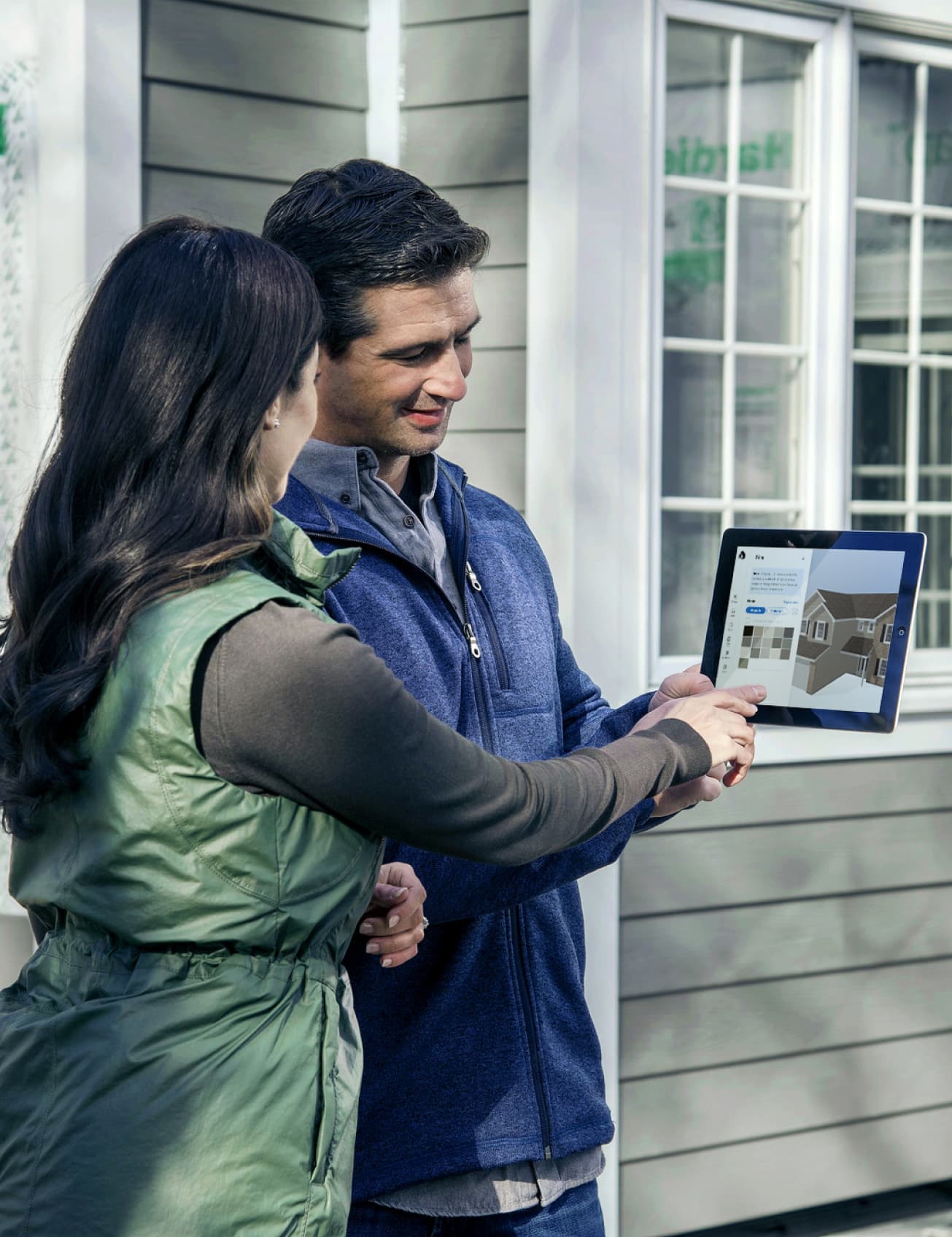
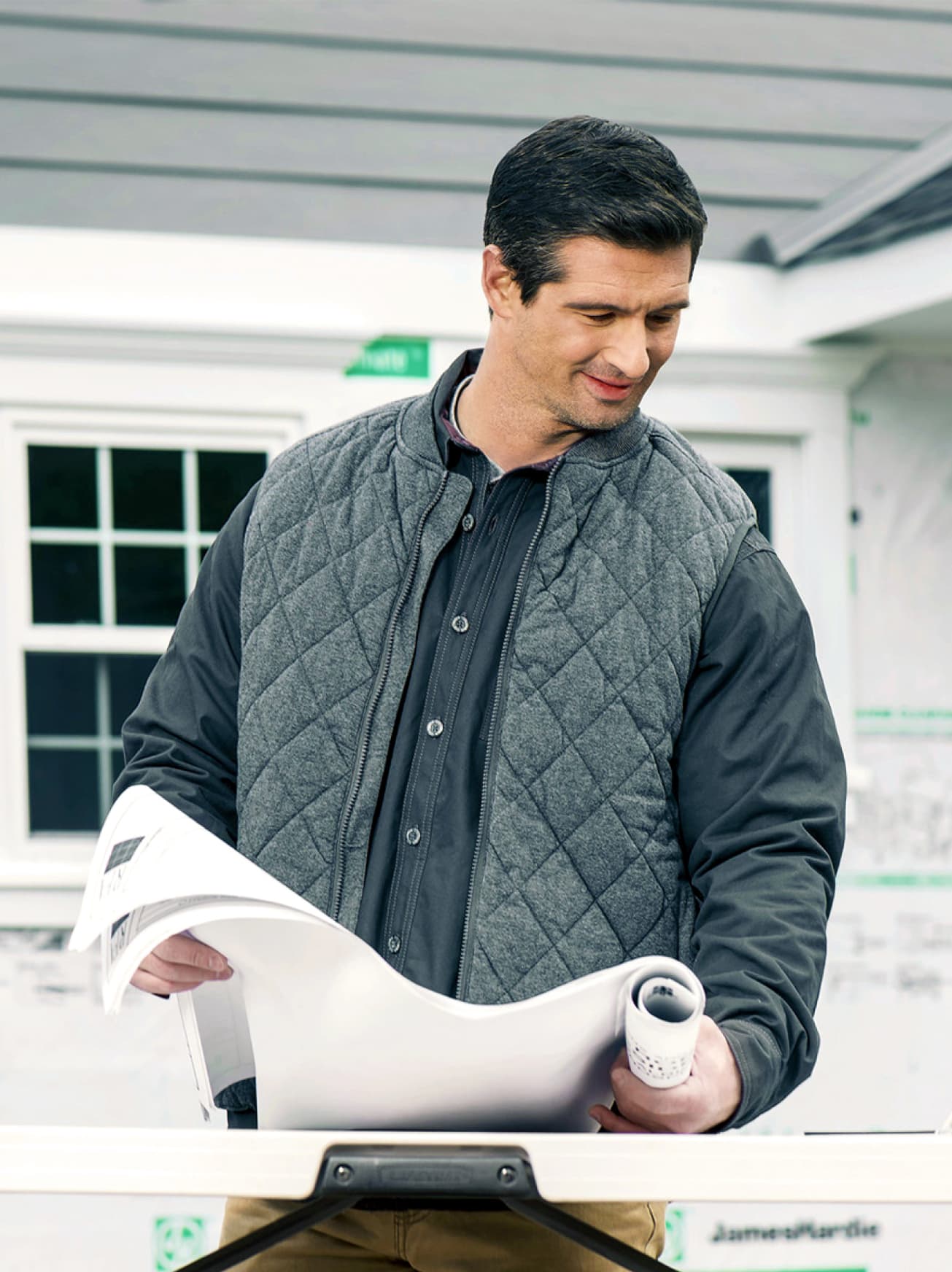
Words cannot describe how Hardie® Plank siding will change your home. Our house looks great and is warmer, tighter, and a lot more maintenance free. No more painting and scraping.
Jim Cornett
Homeowner
Step 2: Installation
Using best practices for installation, your contractor will install a weather barrier and flashings for water management, cut and fit the siding, secure it to your home, and apply the trim. Once installed, your contractor will apply caulk—and if you purchased your Hardie® siding Primed for Paint, will apply the color of your choice for the final finished look. After the installation is complete, the contractor will clean up any excess materials from the jobsite.
We’re naturally talking about Hardie® fiber cement with people who are interested in replacing their existing wood siding; they’re tired of the rot, the woodpecker issues, or paint issues in general.
Joel Sheets
Cochran Exteriors
Step 3: Final walkthrough
Finally, your contractor will walk with you around the exterior of your home so you can see the finished siding project. This is your opportunity to ask questions or address any remaining concerns you may have.
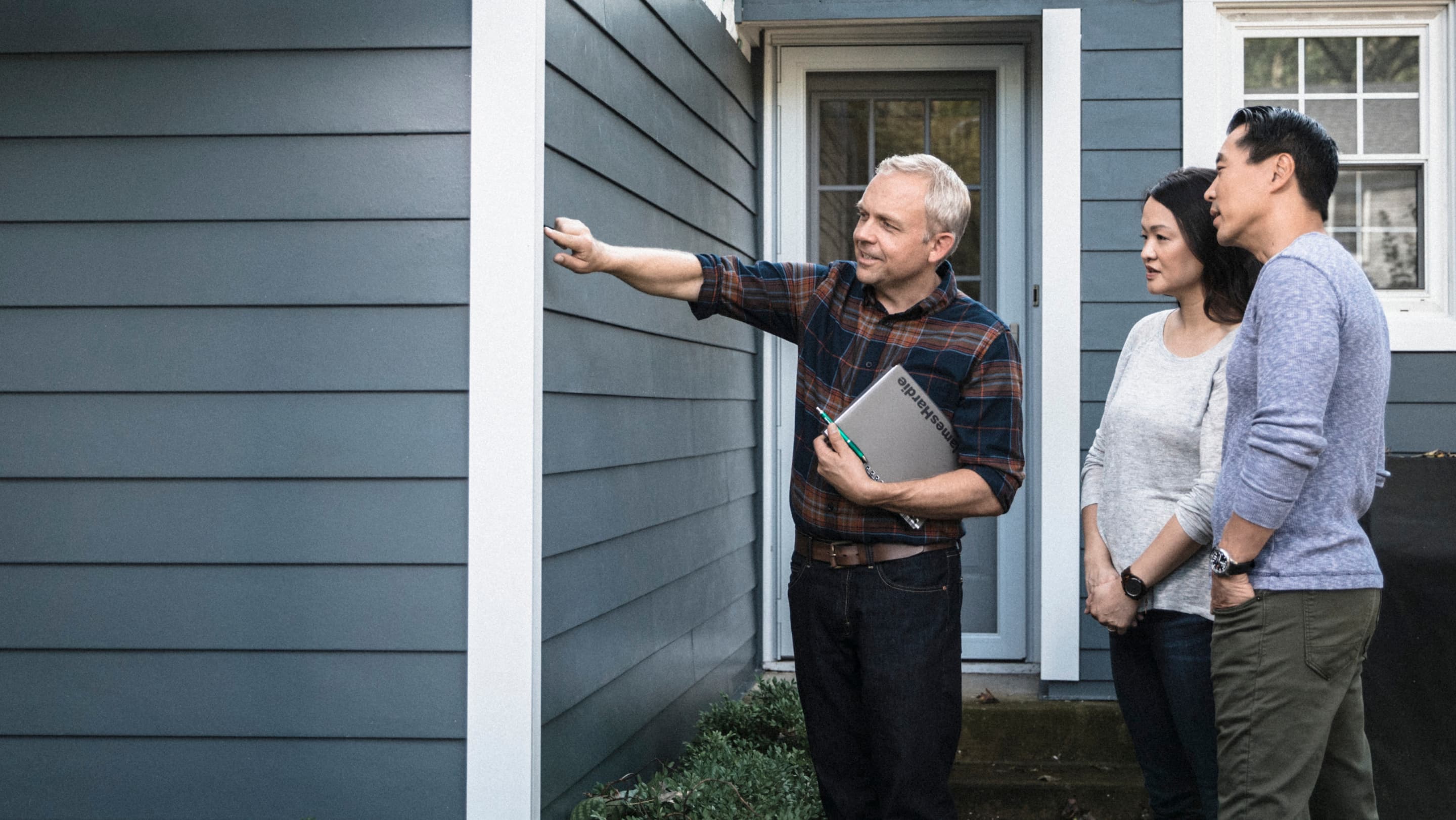
Having something we knew would last and would still look good for a long time was a huge factor in our decision.
Chris and Minna Z
Homeowners
Step 4: Enjoy your beautiful siding
Once the job is complete, there’s only one thing left to do: Celebrate your gorgeous new exterior. Your siding is now a stunning expression of your personal style and a layer of protection for your home. If you’ve chosen Hardie® siding, you’ll enjoy a high-performance, low-maintenance experience that will look fresh for years to come.

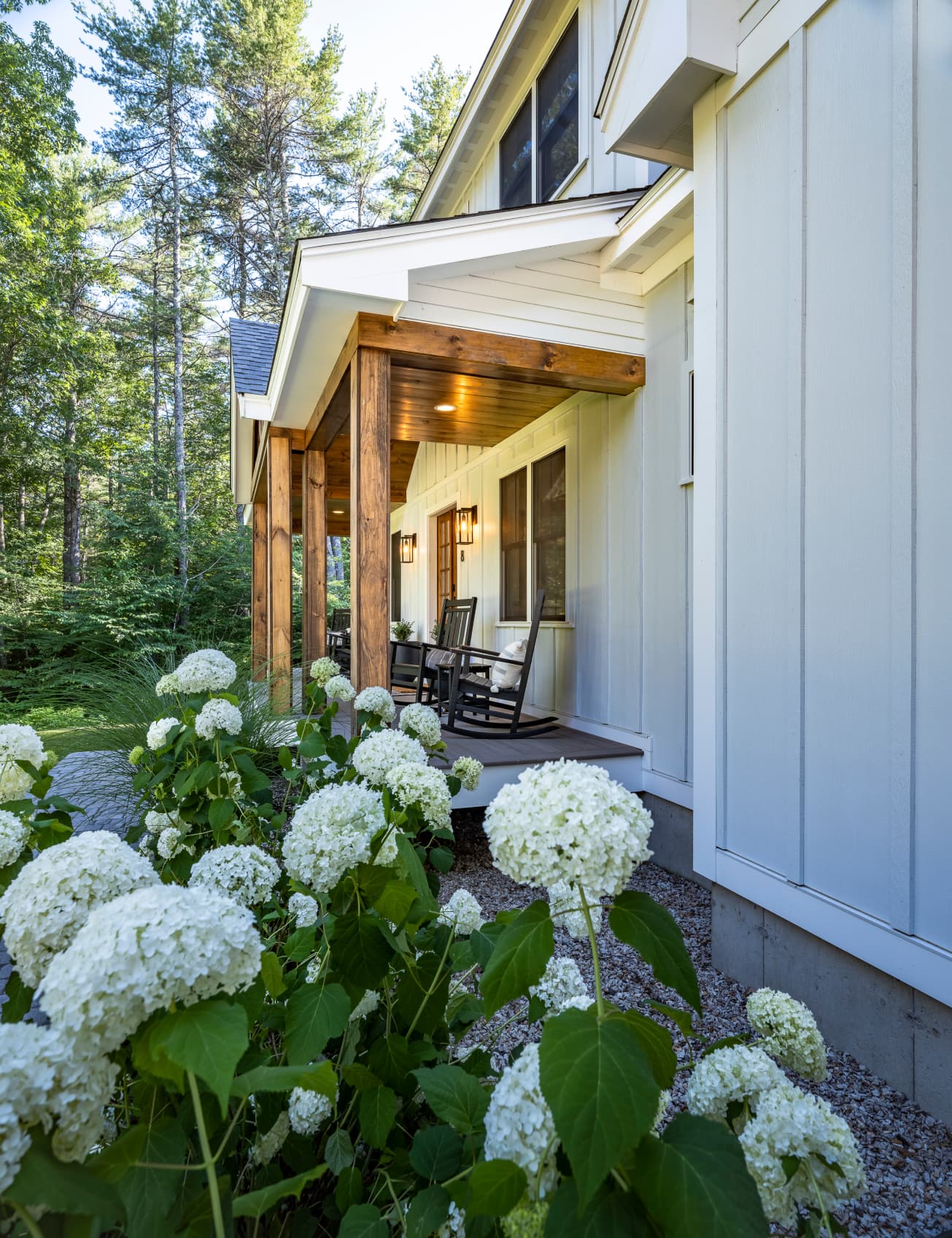
In 20 years you will say to yourself, ‘I made the right decision. I got the right product. I hired the right company.’
Terry Stamman
Owner of Twin Cities Siding Professionals
Ready to take the next step?
Kick off your siding project today by sharing your vision and discussing the re-side process with a local pro.